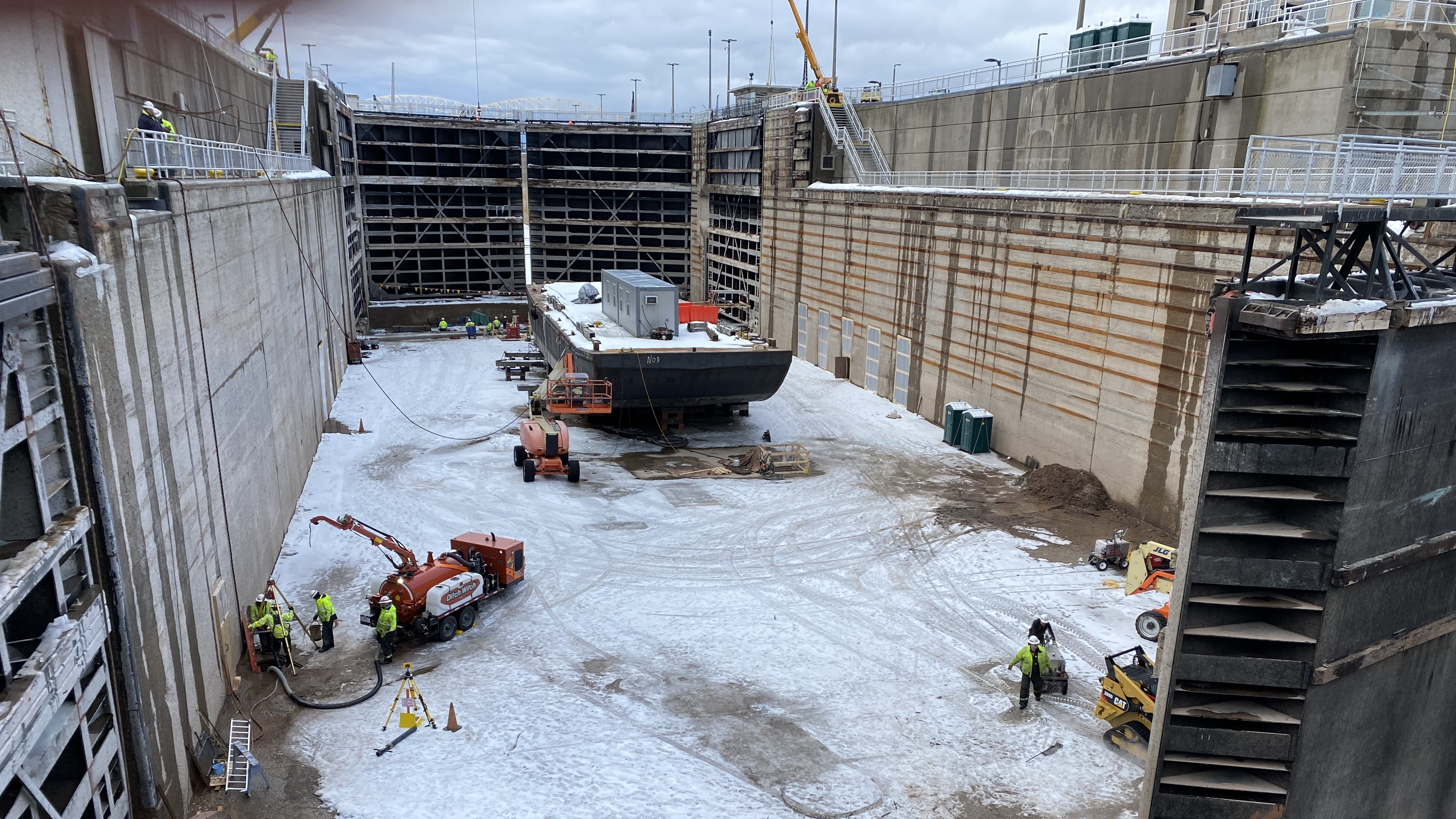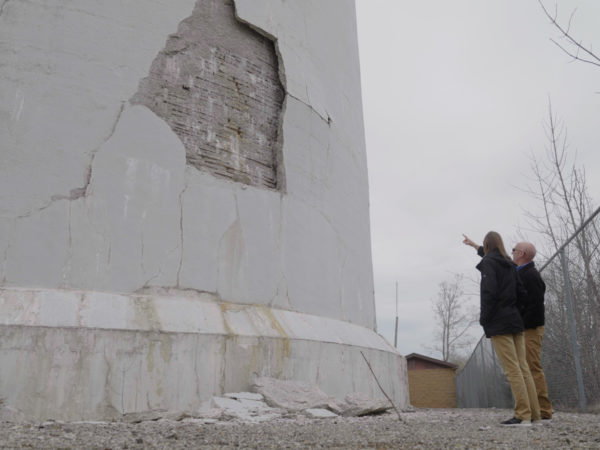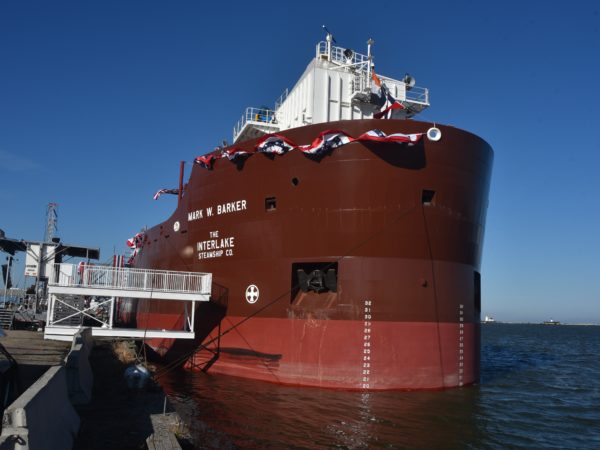
The finish line is finally in view for the new Soo Lock, which was first authorized in 1986 and will help prevent the disruption of the supply chains in event of error or repairs.
“Having a new Soo Lock that has the same dimensions of the Poe and able to accommodate those largest freighters on the lakes will give us a great deal of resiliency and the ability to increase the time periods in which we do necessary repairs or maintenance or rehabilitation throughout the year,” said Lt. Col. Scott Katalenich, commander of the Army Corps of Engineers’ Detroit District.
The Soo Locks in Sault Ste. Marie, Michigan, allow 1,000-foot freighters to bypass the rapids of the St. Marys River and move between Lake Superior and the rest of the Great Lakes and beyond.
For a long time, the bulk of that was handled by the Poe Lock, but 2030 should see a new lock with the same size and capacity as the Poe.
Estimates show the Soo Locks support more than 120,000 U.S. and Canadian jobs, and $22 billion of economic activity, according to a 2018 study.
The lock system also is a piece of infrastructure that is critical to both national and economic security, maritime industry leaders said during a news conference on Thursday describing the progress. The event was held at the National Museum of the Great Lakes in Toledo, Ohio, with a virtual component.

Lt. Col. Scott Katalenich, commander of Army Corps of Engineers’ Detroit District, spoke at a news conference about the Soo Lock project on Nov. 4, 2021. (Image from Great Lakes Seaway Partnership stream)
The project is broken up into three phases, Katalenich said.
The first phase is deepening the upstream channel and scheduled to complete next year.
The second phase involves rehabilitating the channel walls and many other aspects of the future lock. It is scheduled to complete in 2024.
The third phase will be the construction of the new lock chamber itself. The contract will be awarded in February and is scheduled to complete by fall of 2030.
“But we are optimistic that with good weather, we may be able to beat that,” Katalenich said.
Port leaders from Toledo and Monroe were present at the event, and both pointed to the current supply chain disruption in the West as indicators for how important this project and maintaining shipping in the Great Lakes region are.
“The steel industry has its own supply chain right here on the Great Lakes, and it is critically important that it is not to be disrupted,” said Thomas Winston, Toledo-Lucas County Port Authority president and CEO.
Current estimates of the project, according to Katalenich, are just over $1.4 billion. The overall project has received $411 million in authorized funding to date, including $52 million from the state of Michigan.
Katalenich and Lake Carriers’ Association President Jim Weakley both emphasized the focus on resiliency with the project.
“What we’re seeing – with the polar vortex for example – is we’re seeing more extremes,” Weakley said. “The flooding that occurred in February this year of the St. Clair-Detroit River system is a perfect example of how a quick Arctic event can impact the Great Lakes, and we need the systems to be resilient.”
Also at the event, the National Museum of the Great Lakes unveiled three commemorative posters that can be bought at the museum or online, with all proceeds donated to the museum and the Soo Locks Visitor Center.

Soo Locks commemorative posters (Image from Great Lakes Seaway Partnership stream)
Catch more news on Great Lakes Now:
The Soo Locks: Past, present, future
Great Lakes shipping industry united on Soo Locks as priority
Featured image: Poe Lock under repair (Great Lakes Now Episode 1011)



